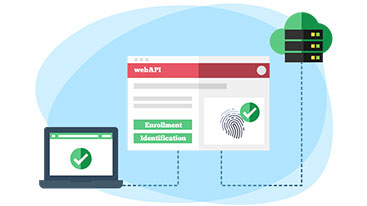Different Methods of Customer Identification (KYC) and their Shortcomings
The customer identification process is globally known as KYC, which stands for Know Your Customer or know your clients. It is the process of identification and authorization of the customer considering risk factors related to the business. KYC is generally practiced by banking and financial institutions as part of the regulation of general banking and anti-money laundering activities. However, some enterprises are also practicing KYC to control the risk factors and ensure the anti-bribery compliant assessment with their clients.

Alternatives of KYC Process
In 2001, the banks in the US were mandated to maintain KYC to prevent money laundering. The process includes collecting the following documents from each client:
- National Identification Card
- Passport
- Social Security Number
- PAN Card
These types of documents or information are mandatory for any form of KYC process worldwide nowadays. Let’s have a look into the different methods used for KYC and their shortcomings:
Paper-Based KYC
From the very beginning, the process was practiced in the paper-based documentation system. This system required huge administrative costs and manpower. Moreover, the authority was continuing to find out the discrepancy in the financial statements and the investigation submitted the report that the people are using fake information for the KYC purpose.
Digital KYC
Over a couple of years, digital KYC was introduced in the banking and financial sectors. This method uses a computer system to record all data of an individual to maintain a hassle-free and easy KYC process. Digital KYC is helping the industry to maintain accurate customer data, and regulatory requirements using a central system. But numerous issues like taking a long time for verification, troublesome API integration with the core system, prone to data breaches, and long queue because of ID verification are associated with this method.
Biometric Based KYC
Biometric verification is simple and convenient for the end users and the most secure method of identification. No one can use the biometrics of others and it is almost impossible to forge the biometric data. And the authentication process is very simple to comply with KYC requirements. It eliminates the difficulties of compliance, record keeping, and repetitive document scanning. At the same time, seamless integration enables this method to work with the core system.
Why Biometric KYC is Best?
There are numerous reasons like identification fraud, and sharing wrong information behind the adoption of biometrics for customer identification. Implementing biometrics in the banking industry for effective KYC management can eliminate the shortcomings of the other methods. The benefits of Biometric KYC are as below:
1. Accurate Identification:
Customer identification is the main objective of the KYC process to forestall illicit fraudulent activity and money laundering. As biometric identification is the most secure way of authentication it eliminates the difficulties of identifying the right person and reduces the risk of the financial transaction.
2. Fastest Verification:
Traditional paper-based or digital KYC process requires more time to verify the person matching their details from the file or computer system. Biometric technology authenticates the individual in less than a second and reduces the hassles of repetitive authentication.
3. Optimum Security:
Protecting customer’s identities, and preventing identity theft the biometric KYC enables the banking institutions to reduce the transaction risk. The biometric authentication is the most sophisticated security system that ensures optimum security level, reducing the chances of being the victim of forged identification to almost zero.
In conclusion, it’s your turn to decide which method you should go for? Traditional methods for customer identification or the biometric-based method? If we sum up the discussion, the best way to deploy a system for customer identification is the biometric KYC process which is accepted worldwide, and mandatory for sensitive institutions like the banks.













